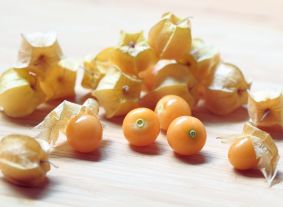Joining a CSA
Views: 4235

As I write this, I’m on a ferry to eastern Long Island, headed back to the family farm for the holidays. We’ll have meals of mostly vegetables and meats raised right on the property. Alternatively, given to my family from neighboring farmers and friends, with the help of a CSA.
The pork roast or ham will be fresh, as will be the squash used in the side dishes and pies. My mother will have canned green beans and frozen peas and corn during the summer. Some of those cans will come out not just for these holiday meals, but also for meals throughout the year.
Garden Meals
When the kids were young, she kept track each year of how much of this and that she put up during harvest. Our family ate what we harvested during the year. Well, except for rice and perhaps an occasional head of exotic iceberg lettuce during the winter. That harvest—and the gifts from other farmers—kept us fed year-round. Think pasta and sauce is a common meal? Not when I was growing up. Pasta with tomato sauce was a big deal; we had only so many jars of canned tomatoes to last us through until the next crop ripened.
The farming I do now in my 10-by-18-foot Boston-area community garden plot is purely recreational. We have loads of lettuce and fresh greens for salads throughout the summer. Tomatoes, zucchini, and green beans are plentiful, too. I’m still working on getting our eggplant, bell peppers, and carrots to be super producers. Sure, we have plenty of rhubarb for the freezer, and herbs, too, frozen as pesto or dried. But by no means do we have the space in the garden to feed a family of two even through the gardening season, let alone in the colder months.
That’s why I’m signing up for a share in a local Community Supported Agriculture (CSA) farm.
How does a CSA work?
I’m sure you’ve heard of this concept by now. A local farm sells shares of a harvest to investors, who in turn receive a weekly allotment of whatever is harvested.
The rules vary from farm to farm; some require the investors to volunteer a certain number of labor hours; some will provide extras in the form of seasonal berries or milk or other farm products for an additional fee; and so on.
For the most part, these CSAs attempt to provide the investor with locally grown, fresh produce from early spring to as deep in the fall as possible. I understand this could mean more turnips than is humanly possible to eat in November. I understand it, and I accept the challenge. And I am more than willing—in fact, I am honored—to supplement my meager recreational farming with a big, fat bushel of whatever my CSA is producing.
And I’m totally willing to swap some of my rhubarb for an extra eggplant or two.
Meet Ellen Wells
When you’re raised on a farm, you can’t help but know a thing or two about gardening. Ellen Wells is our expert on edible gardening.…







